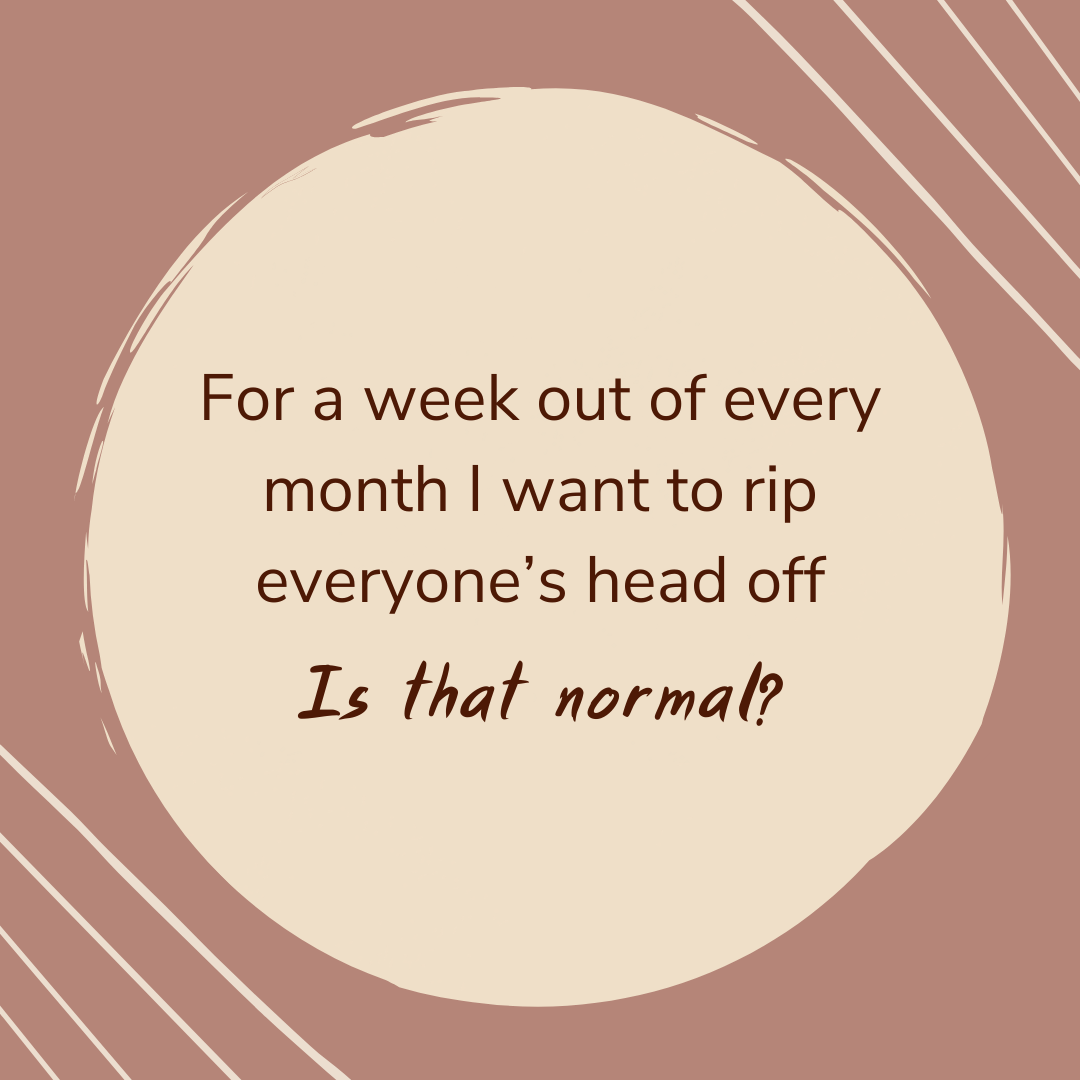A lot of symptoms get chalked up to PMS, and most women can identify changes in their bodies and behaviours leading up to their periods. But how do we figure out what’s normal?
A monthly menstrual cycle involves a fluctuation in reproductive hormones with estrogen dominating in the follicular phase (day 1 of your period to ovulation), and progesterone taking the lead in the luteal phase (ovulation to the last day before your next period). As hormone levels drop and the uterus prepares to shed its lining, it’s normal and common to experience some MILD symptoms such as changes in mood (usually feeling less social and more inclined to rest). The more intense, and the longer before your period that symptoms begin, the more likely it is your body would benefit from support in moving through its monthly cycle. It’s normal to have signs and symptoms that let us know we’re moving through our cycle, but PMS doesn’t have to be a dreaded monthly ordeal.
If you experience intense mood fluctuations, if you feel violently angry, intensely sad or hopeless in the week or 2 leading up to every period, and these symptoms resolve within a few days of your period starting, you may be experiencing Premenstrual Dysphoria Disorder (PMDD). This is a health condition that's may be misdiagnosed as major depression or dismissed as 'just PMS'. These symptoms can have big impacts on how we feel, how we function and our sense of self-worth. These symptoms are real and valid. I want you to know that you’re not alone, and that there are natural treatments available that can ease your suffering.
By supporting your body’s monthly hormonal transitions, reducing stress, improving nutrition and supporting your mental and emotional health, as well as your nervous system, we can drastically improve the impacts of PMDD and PMS.
Whether you experience unpleasant symptoms of PMS, or suffer from all out PMDD, I'm here to support you. To learn more about how, reach out – I’d love to chat.

